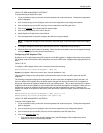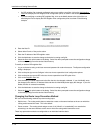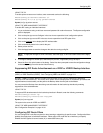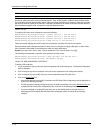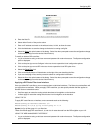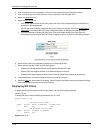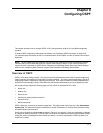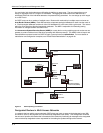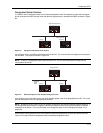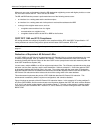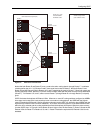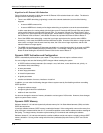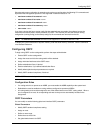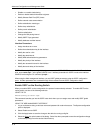
Chapter 8
Configuring OSPF
This chapter describes how to configure OSPF on HP routing switches using the CLI and Web management
interface.
To display OSPF configuration information and statistics, see “Displaying OSPF Information” on page 8-39.
For complete syntax information for the CLI commands shown in this chapter, see the Command Line Interface
Reference.
NOTE: The HP 6308M-SX routing switches and Chassis routing switches using basic management modules
(modules that do not use H2R flash code) can contain 10000 routes by default. If you need to increase the
capacity of the IP route table for OSPF, see the “Displaying and Modifying System Parameter Default Settings“
section in the “Configuring Basic Features“ chapter of the Installation and Getting Started Guide.
Overview of OSPF
OSPF is a link-state routing protocol. The protocol uses link-state advertisements (LSA) to update neighboring
routers regarding its interfaces and information on those interfaces. The routing switch floods these LSAs to all
neighboring routers to update them regarding the interfaces. Each router maintains an identical database that
describes its area topology to help a router determine the shortest path between it and any neighboring router.
HP routing switches support the following types of LSAs, which are described in RFC 1583:
• Router link
• Network link
• Summary link
• Autonomous system (AS) summary link
• AS external link
• NSSA external link
OSPF is built upon a hierarchy of network components. The highest level of the hierarchy is the Autonomous
System (AS). An autonomous system is defined as a number of networks, all of which share the same routing
and administration characteristics.
An AS can be divided into multiple areas as shown in Figure 8.1 on page 8-2. Each area represents a collection
of contiguous networks and hosts. Areas limit the area to which link-state advertisements are broadcast, thereby
limiting the amount of flooding that occurs within the network. An area is represented in OSPF by either an IP
address or a number.
8 - 1



